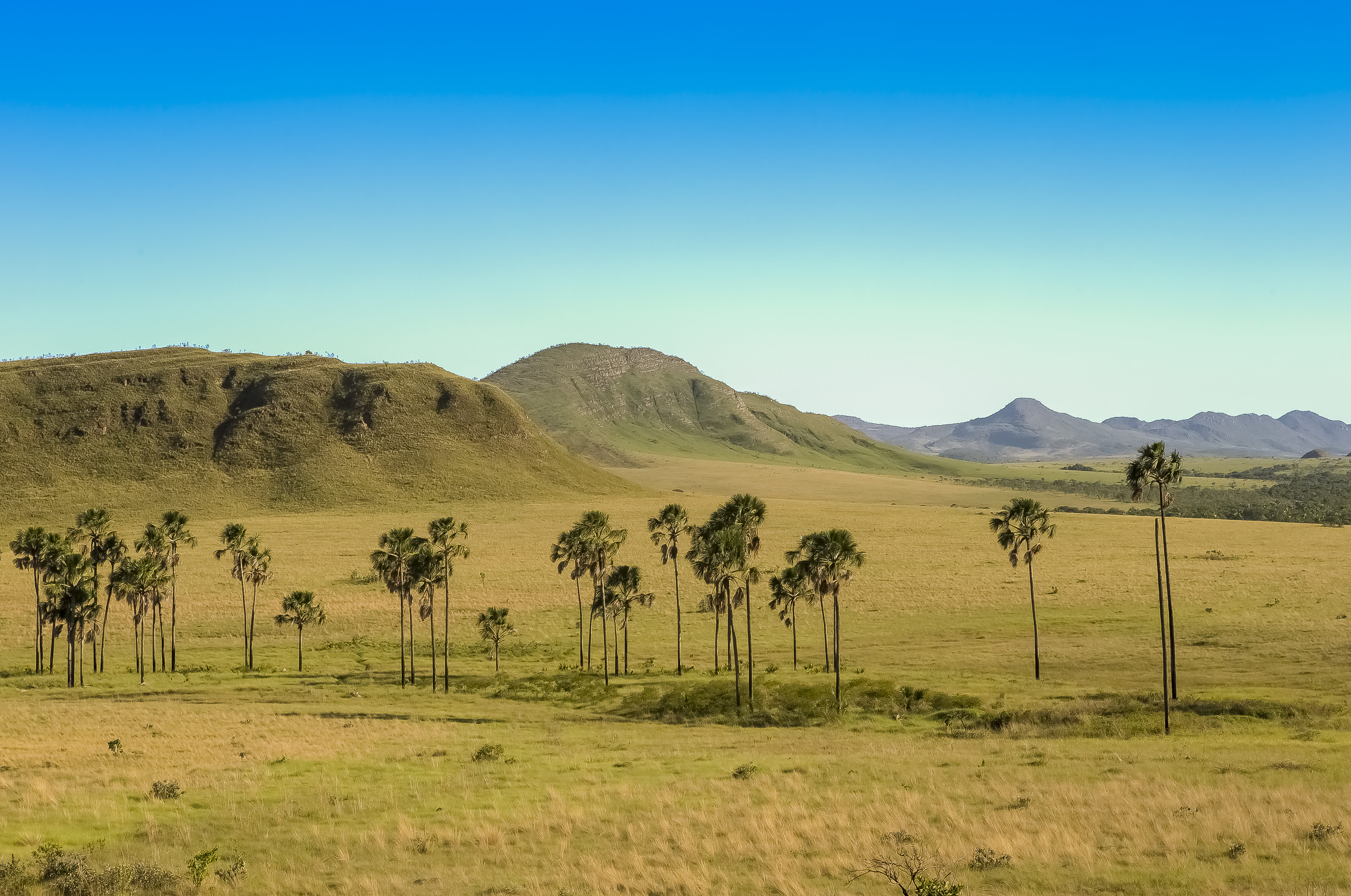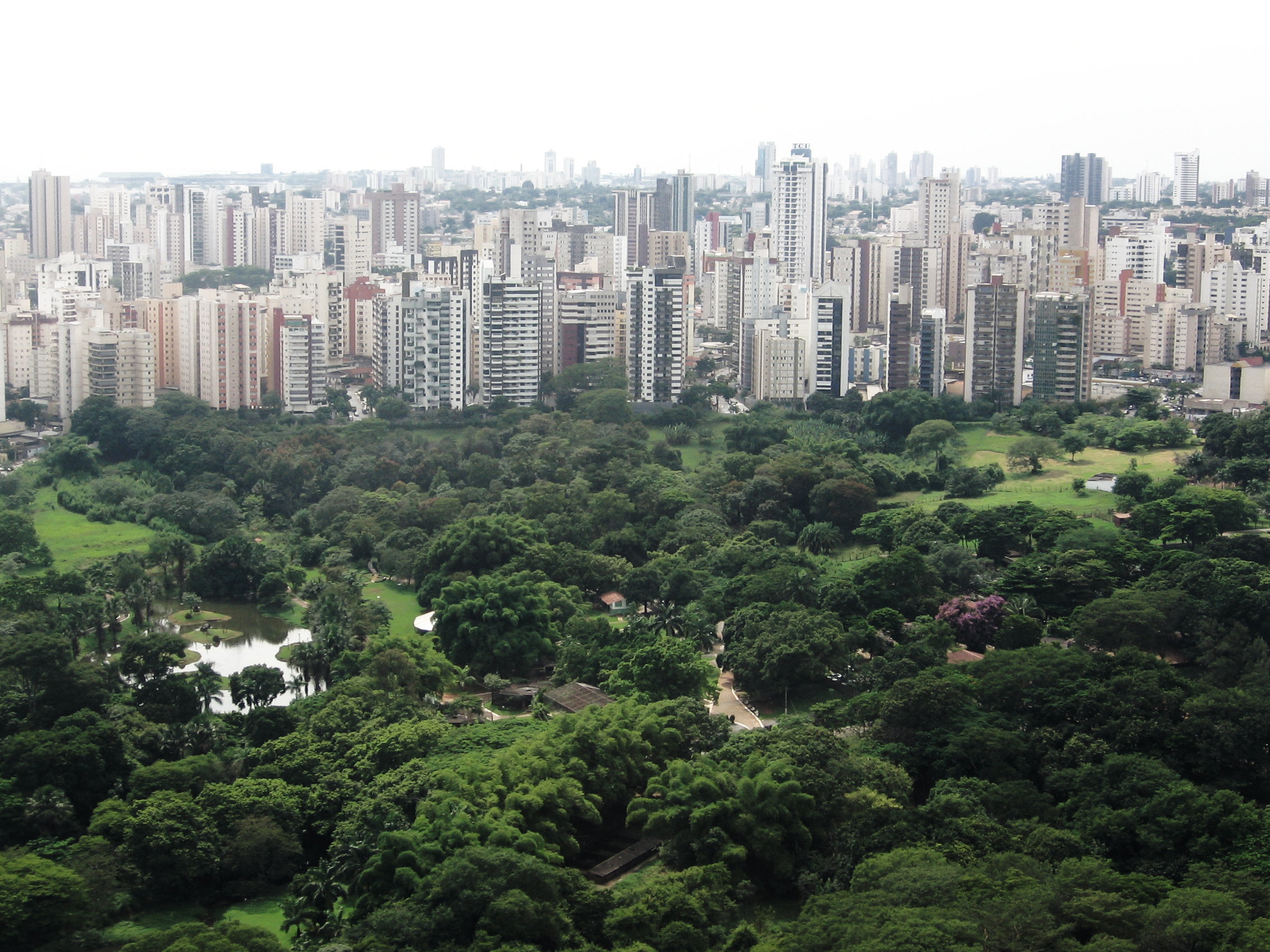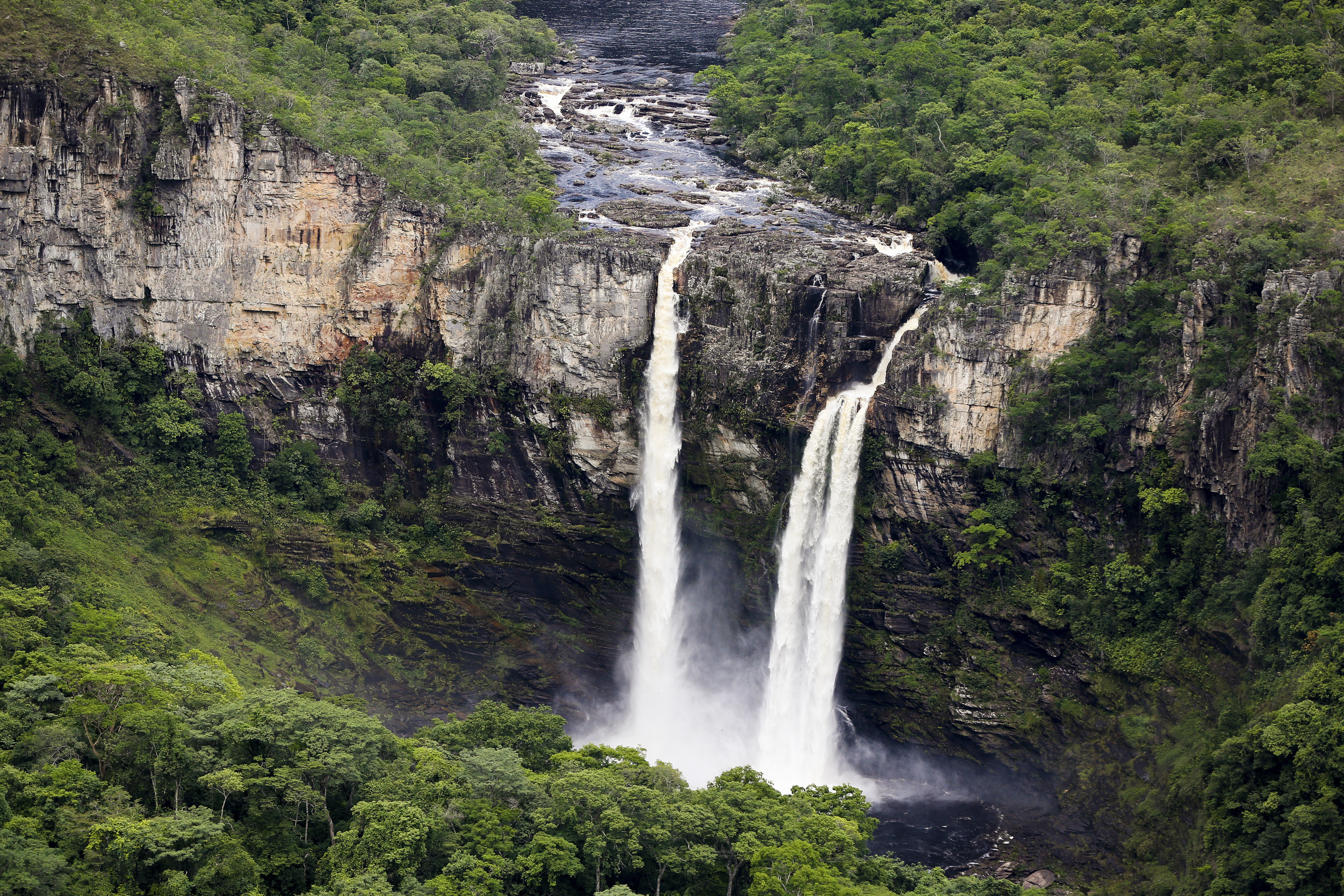|
Professor José Ângelo Rizzo Biological Reserve
Professor José Ângelo Rizzo Biological Reserve () is a nature reserve, biological reserve in the state of Goiás, Brazil. Location The reserve was created in 1969 in the municipality of Mossâmedes, about from Goiânia. It is located in the Serra Dourada. The reserve, which covers , is the responsibility of the Federal University of Goiás (UFG), and is also known as the Reserva Biológica da UFG. It is within the Serra Dourada State Park. The reserve is surrounded by a fence, and accessible by dirt road. It contains laboratories and housing which provide a base for researchers, students and visitors. Environment The reserve is of interest for its vegetation, geological formation, wildlife and scenic beauty. The area includes slopes of the Sierra, and is well preserved. It displays cerrado characteristics, including the presence of endemic species. Some areas are devoid of high plants and covered mostly by grass of the Vellozia and Tibouchina papyrus species. The fauna is com ... [...More Info...] [...Related Items...] OR: [Wikipedia] [Google] [Baidu] |
Biological Reserve (Brazil)
A biological reserve (, Rebio) in Brazil Brazil, officially the Federative Republic of Brazil, is the largest country in South America. It is the world's List of countries and dependencies by area, fifth-largest country by area and the List of countries and dependencies by population ... is a legally defined type of protected area of Brazil, a conservation unit that aims for full preservation of biota and other natural attributes without human interference. It may be visited only with prior approval of the responsible agency, and only for research or educational purposes. Definition A "Biological reserve" in Brazil is one of the Integral Protection Units defined by Article 13 of Law No. 9,985 of 18 July 2000, National System of Nature Conservation Units (SNUC). The biological reserve is public property. When it is established any private lands within its limits are expropriated. The manager of the biological reserve must prepare a management plan for approval by the respons ... [...More Info...] [...Related Items...] OR: [Wikipedia] [Google] [Baidu] |
ICMBio
The Chico Mendes Institute for Biodiversity Conservation ( Portuguese: ''Instituto Chico Mendes de Conservação da Biodiversidade'', ICMBio) is a government agency under the administration of the Brazilian Ministry of the Environment. It is named after the environmental activist Chico Mendes. Its function is to protect, manage, and administrate protected areas within the country's territory. ICMBio is headquartered in Brasília Brasília ( ; ) is the capital city, capital of Brazil and Federal District (Brazil), Federal District. Located in the Brazilian highlands in the country's Central-West Region, Brazil, Central-West region, it was founded by President Juscelino .... References Nature conservation in Brazil Executive branch of Brazil Research institutes in Brazil Biodiversity databases Government agencies established in 2007 Environmental organizations established in 2007 2007 establishments in Brazil {{brazil-gov-stub, date=March 2014 ... [...More Info...] [...Related Items...] OR: [Wikipedia] [Google] [Baidu] |
Nature Reserve
A nature reserve (also known as a wildlife refuge, wildlife sanctuary, biosphere reserve or bioreserve, natural or nature preserve, or nature conservation area) is a protected area of importance for flora, fauna, funga, or features of geological or other special interest, which is reserved and managed for purposes of Conservation (ethic), conservation and to provide special opportunities for study or research. They may be designated by government institutions in some countries, or by private landowners, such as charities and research institutions. Nature reserves fall into different IUCN protected area categories, IUCN categories depending on the level of protection afforded by local laws. Normally it is more strictly protected than a nature park. Various jurisdictions may use other terminology, such as ecological protection area or private protected area in legislation and in official titles of the reserves. History Cultural practices that roughly equate to the establishmen ... [...More Info...] [...Related Items...] OR: [Wikipedia] [Google] [Baidu] |
Goiás
Goiás () is a Brazilian States of Brazil, state located in the Central-West Region, Brazil, Central-West region. Goiás borders the Federal District (Brazil), Federal District and the states of (from north clockwise) Tocantins, Bahia, Minas Gerais, Mato Grosso do Sul and Mato Grosso. The state capital is Goiânia. With 7.2 million inhabitants, Goiás is the most populous state in the Central-West region and the List of Brazilian states by population, 11th most populous in the country. It has the List of Brazilian federative units by gross regional product, ninth largest economy among Brazilian federative units. In Brazil's geoeconomic division, Goiás belongs to the Centro-Sul (Center-South), being the northernmost state of the southern portion of Brazil. The state has 3.3% of the Brazilian population and is responsible for 2.7% of the Brazilian GDP. The history of Goiás dates back to the beginning of the 18th century, with the arrival of pioneers from São Paulo. The Rio Verm ... [...More Info...] [...Related Items...] OR: [Wikipedia] [Google] [Baidu] |
Mossâmedes
Mossâmedes is a municipality in western Goiás state, Brazil. Location Mossâmedes is located northwest of the state capital, Goiânia in the Anicuns Microregion. It is connected by paved roads with Itaberaí to the north and Anicuns to the south. The distance to the state capital is 142 kilometers. Road connections from Goiânia are made by GO-060 / Trindade / GO-326 / Anicuns / GO-222 / Chopana / GO-326 / Sanclerlândia / GO-164. Municipal boundaries are with Goiás, Sanclerlândia, Adelândia, Americano do Brasil, Anicuns, Itaberaí and Buriti de Goiás The municipality contains the Professor José Ângelo Rizzo Biological Reserve, a strictly protected conservation unit created in 1969 and administered by the Federal University of Goiás (UFG). It also contains part of the Serra Dourada State Park, created in 2003. Demographics The population has decreased by more than 50% since 1980, when it was 12,208. At that time most of the population was rural and did not ... [...More Info...] [...Related Items...] OR: [Wikipedia] [Google] [Baidu] |
Goiânia
Goiânia ( ; ) is the capital and largest city of the Brazilian federative units of Brazil, state of Goiás. With a population of 1,536,097, it is the second-largest city in the Central-West Region, Brazil, Central-West Region and the 10th-largest in the country. Its Greater Goiânia, metropolitan area has a population of 2,890,418, making it the 12th-largest in Brazil. With an area of approximately , it has a continuous geography with few hills and lowlands, with flat lands in most of its territory, especially the Meia Ponte River, in addition to Botafogo and Capim Puba streams. Goiânia has its origins as a planned community, planned city, founded on October 24, 1933, by then Governor Pedro Ludovico to serve as the new state capital and administrative center. Before this, the state capital was the town of Goiás, Goiás, Goiás. It is the second most populous city in the Central-West Region, only surpassed by the country's capital Brasília, located about from Goiânia. The ci ... [...More Info...] [...Related Items...] OR: [Wikipedia] [Google] [Baidu] |
Federal University Of Goiás
The Federal University of Goiás (, UFG) is a publicly funded university located in the Brazilian state of Goiás, headed in Goiânia and with campuses in the municipalities of Catalão, City of Goiás, and Jataí. Founded on December 14, 1960, after the merger of previously existing colleges, UFG is the only federally funded institution of higher education in the state, the richest and most populous in the Central-West Region of Brazil. The activities of the university involves 28,899 students in 150 undergraduate courses. According to the National Institute of Studies and Research on Education, linked to the Ministry of Education, UFG is the second best university in the Central-West Region, behind only University of Brasília. The university administers the Professor José Ângelo Rizzo Biological Reserve, a strictly protected conservation unit created in 1969 in the municipality of Mossâmedes. Undergraduate courses See also *List of federal universities of ... [...More Info...] [...Related Items...] OR: [Wikipedia] [Google] [Baidu] |
Cerrado
The Cerrado () is a vast ecoregion of Tropics, tropical savanna in central Brazil, being present in the states of Goiás, Mato Grosso do Sul, Mato Grosso, Tocantins, Maranhão, Piauí, Bahia, Minas Gerais, São Paulo (state), São Paulo, Paraná (state), Paraná and the Federal District (Brazil), Federal District. The core areas of the Cerrado biome are the Brazilian highlands – the ''Planalto''. The main habitat types of the Cerrado consist of forest savanna, wooded savanna, park savanna and grass, gramineous-woody savanna. The Cerrado also includes savanna wetlands and gallery forests. The second largest of Biomes in Brazil, Brazil's major habitat types, after the Amazon rainforest, Amazonian rainforest, the Cerrado accounts for a full 21 percent of the country's land area (extending marginally into Paraguay and Bolivia). About 75% of the Cerrado’s 2 million km2 is privately owned. Vast amounts of research have shown that the Cerrado is one of the richest of all tropi ... [...More Info...] [...Related Items...] OR: [Wikipedia] [Google] [Baidu] |
Vellozia
''Vellozia'' is a plant genus in the family Velloziaceae, established in 1788. The genus is endemic to South America except for one species ''(V. tubiflora),'' whose range extends into Panama. Most of the species are native to Brazil, with a dense concentration of species in the State of Minas Gerais Minas Gerais () is one of the 27 federative units of Brazil, being the fourth largest state by area and the second largest in number of inhabitants with a population of 20,539,989 according to the 2022 Brazilian census, 2022 census. Located in .... ; Species References {{Taxonbar, from=Q9092836 Velloziaceae Pandanales genera ... [...More Info...] [...Related Items...] OR: [Wikipedia] [Google] [Baidu] |
Tibouchina Papyrus
''Tibouchina papyrus'' Toledo was described in 1952. ''Tibouchina papyrus'' is a narrow endemic to the ''campos rupestres'' and is mainly found in three localities in the states of Goiás and Tocantins in central Brazil, including the Serra da Natividade. Abreu ''et al''. found that ''T. papyrus'' is a habitat-specialist on rocky outcrop ''cerrado'' which typically has shallow substrate and uneven topography, with sandstone soils and quartzite outcrops. This species has been collected at elevations between 500 metres and 1,100 metres. ''T. papyrus'' is listed as Vulnerable species, vulnerable by the IUCN. ''Tibouchina'' ''papyrus'' is locally known as “pau-papel”. The flowers of ''T. papyrus'' are Buzz pollination, buzz pollinated by large bees in the genera ''Xylocopa'', ''Bombus'' and ''Centris'', and the seeds are wind dispersed (autochory). Flowers have higher fruit production when cross-pollinated although they are not self-incompatible and can produce low numbers of frui ... [...More Info...] [...Related Items...] OR: [Wikipedia] [Google] [Baidu] |
Biological Reserves Of Brazil
Biology is the scientific study of life and living organisms. It is a broad natural science that encompasses a wide range of fields and unifying principles that explain the structure, function, growth, origin, evolution, and distribution of life. Central to biology are five fundamental themes: the cell as the basic unit of life, genes and heredity as the basis of inheritance, evolution as the driver of biological diversity, energy transformation for sustaining life processes, and the maintenance of internal stability (homeostasis). Biology examines life across multiple levels of organization, from molecules and cells to organisms, populations, and ecosystems. Subdisciplines include molecular biology, physiology, ecology, evolutionary biology, developmental biology, and systematics, among others. Each of these fields applies a range of methods to investigate biological phenomena, including observation, experimentation, and mathematical modeling. Modern biology is grounded in ... [...More Info...] [...Related Items...] OR: [Wikipedia] [Google] [Baidu] |





